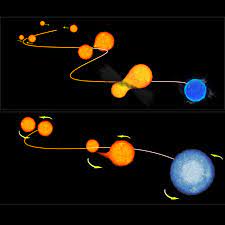Blue Straggler Stars:

Scientists at Indian Institute of Astrophysics, Bengaluru, have found support for one way to understand peculiarity about Blue Straggler Star.
- The researchers made use of the observations by the UVIT instrument (Ultraviolet Imaging Telescope) of Astrosat, India’s first science observatory in space.
- Earlier in September 2021, in the first-ever comprehensive analysis of blue stragglers, Indian researchers had proposed a hypothesis for the evolution of blue straggler stars.
- Blue Straggler Star are hot, blue, massive stars and seem to have a different trajectory of evolution from the norm.
- There are a few stars that, when they are expected to start expanding in size and cooling down, do just the opposite.
- They grow brighter and hotter as indicated by their blue color.
- Thus, standing out from the cooler red stars in their vicinity in the color-magnitude diagram.
- Since they lag their peers in evolution, they are called stragglers, more specifically, blue stragglers, because of their hot, blue color.
- Allan Sandage (an astronomer with Carnegie Observatories in Pasadena, California) discovered blue stragglers in the globular cluster M3 in 1952-53.
- Most are located at least several thousand light-years away from the sun, and most are around 12 billion years old or more.
- The Milky Way’s largest and brightest globular is Omega Centauri.




